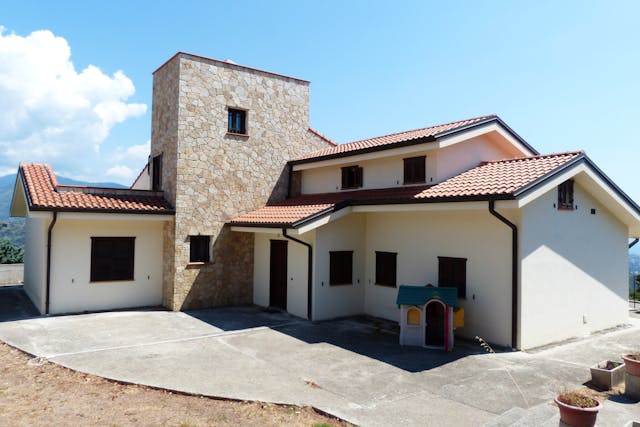
What Makes a Roofing Job Done Right (And What Doesn’t)
When a roof is done well, you barely have to think about it. It keeps the rain out, helps with energy bills, and just does its job without a problem. But when a roof isn’t done right, it shows—and fast. Leaks, loose shingles, mold, or even a sagging structure can turn into expensive repairs. So how do you know if a roofing job was done properly, or if you’re going to end up calling someone back in a few months?
Let’s break it down in a way that actually makes sense, even if roofing isn’t your thing.
Table of Content
What a Good Roofing Job Actually Looks Like
A good roof starts with the basics: strong materials, the right tools, and someone who knows what they’re doing. That doesn’t just mean hammering down some shingles. It means paying attention to how everything fits together—shingles, underlayment, flashing, vents, and even the edges.
One of the first signs of a solid job is neatness. The lines of the shingles should be straight, the edges sealed tight, and everything should look even. Sloppy work might not show problems right away, but over time, bad sealing or uneven surfaces will let water in, and once that happens, you’re dealing with way more than just your roof.
Also, the cleanup should be part of the work. Any roofing crew that leaves behind nails, broken shingles, or trash isn’t doing the full job. If they can’t clean up right, you have to wonder what else they skipped.
What Usually Goes Wrong (and Why It Matters)
Most bad roofing jobs have the same issues. One of the biggest ones is poor flashing—those metal pieces around vents, chimneys, and valleys. Flashing keeps water from sneaking into cracks, and if it’s installed wrong, leaks are pretty much guaranteed.
Another red flag? Reusing old materials just to save time or money. Sometimes, roofing companies reuse old flashing or leave behind damaged decking (the wood under the shingles). That might seem cheaper now, but it leads to more damage later.
And then there’s ventilation. A lot of people don’t realize that a roof needs to “breathe.” If air can’t move through the attic, heat and moisture build up. That makes shingles wear out faster and can even mess with insulation or wiring. A good roofer will check that airflow is working right—not just toss on new shingles and leave.
Choosing the Right Help Matters
Hiring the right company makes a huge difference. There are plenty of contractors out there, but not all of them are careful, experienced, or even properly licensed. Some just show up, do the job fast, and disappear if anything goes wrong later.
It helps to find someone who’s been around for a while and knows the area—especially in places where the weather is tough on homes, like Florida. Working with a company that has real reviews, local experience, and clear answers to your questions makes things a lot less risky. For example, anyone looking for experienced help in Tampa Bay might consider a team like Done Rite Roofing, or others with a strong track record in the region. The important thing is finding someone who knows your area and does things the right way—not just the quick way.
How Long Should It Take?
A full roof replacement usually takes a couple of days, depending on the size of the house and the weather. If someone says they can do it in a few hours, be careful. They might be rushing or skipping steps.
It should start with a full inspection of your roof—looking at the shingles, flashing, vents, and the wood underneath. If there’s any damage or water issues, those need to be fixed before the new roof goes on.
And once the work starts, there should be clear communication. You should know when they’re arriving, what they’re doing each day, and who to talk to if you have questions. A good roofing job isn’t just about tools and nails—it’s also about trust and clear info.
When to Get Your Roof Checked
You don’t have to wait for a leak to check your roof. If it’s been more than 10 years since it was last looked at, it’s a good idea to have someone inspect it. Even small signs like missing shingles, granules in the gutters, or weird stains on the ceiling can mean there’s something wrong up there.
Getting ahead of problems saves money in the long run. A simple repair today might stop a huge mess six months from now.
Why Quality Matters Long-Term
A well-done roof lasts longer and needs fewer repairs. It protects the whole house—walls, ceiling, wiring, and even the air inside. When water gets in, it doesn’t just damage the roof. It can cause mold, ruin insulation, and even mess with the structure of the home.
That’s why it’s worth spending a little more for someone who knows what they’re doing. A cheap roofing job that fails too soon will always end up costing more.
Final Thoughts: What to Look Out For
If you’re dealing with roof work soon, here are a few things to keep in mind:
- The job should start with a full inspection.
- Materials should be new, not reused unless they’re in perfect shape.
- The contractor should be licensed, insured, and experienced.
- There should be solid communication from start to finish.
- The roof should have proper ventilation, clean lines, and sealed flashing.
Roofing isn’t the flashiest part of a house, but it’s one of the most important. When it’s done right, you don’t have to think about it for years. When it’s done wrong, you’ll be thinking about it every time it rains. So whether it’s a repair, replacement, or just a check-up, make sure it’s done the way it should be.


